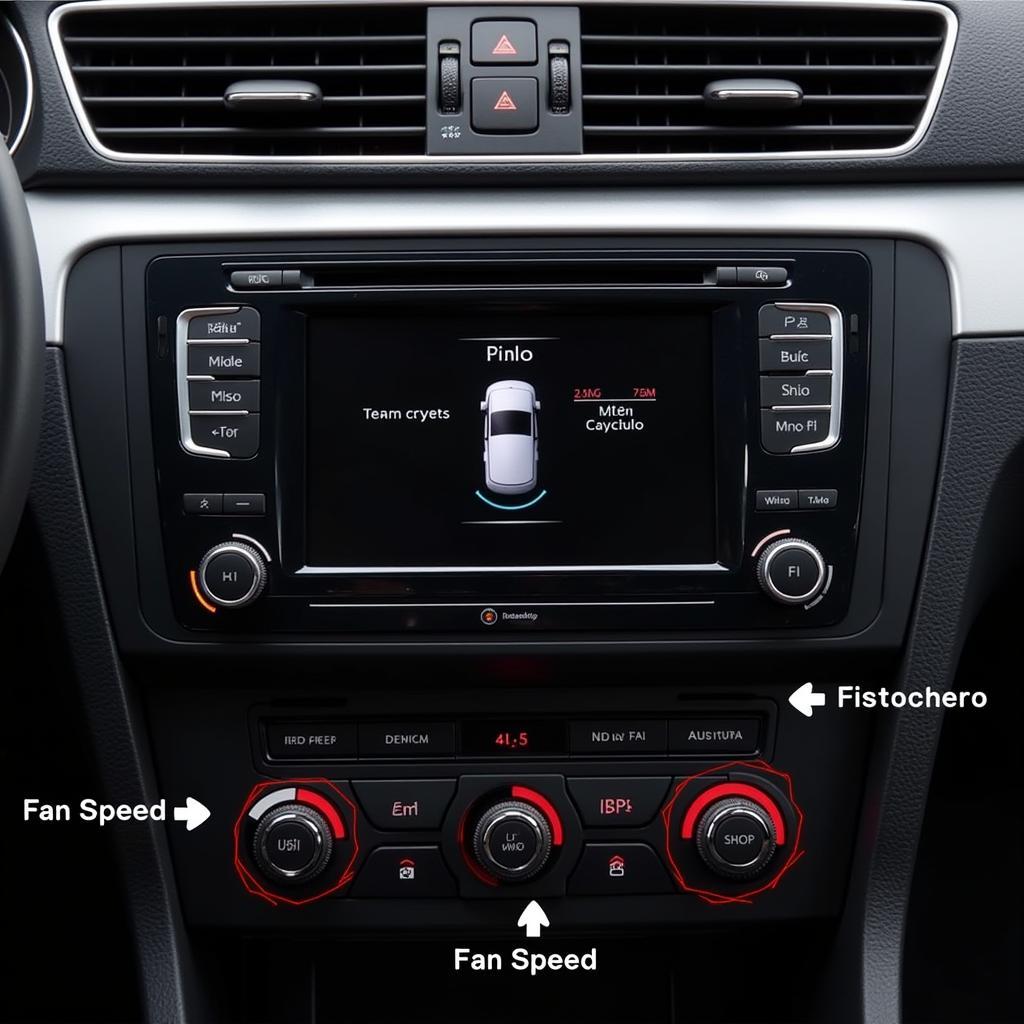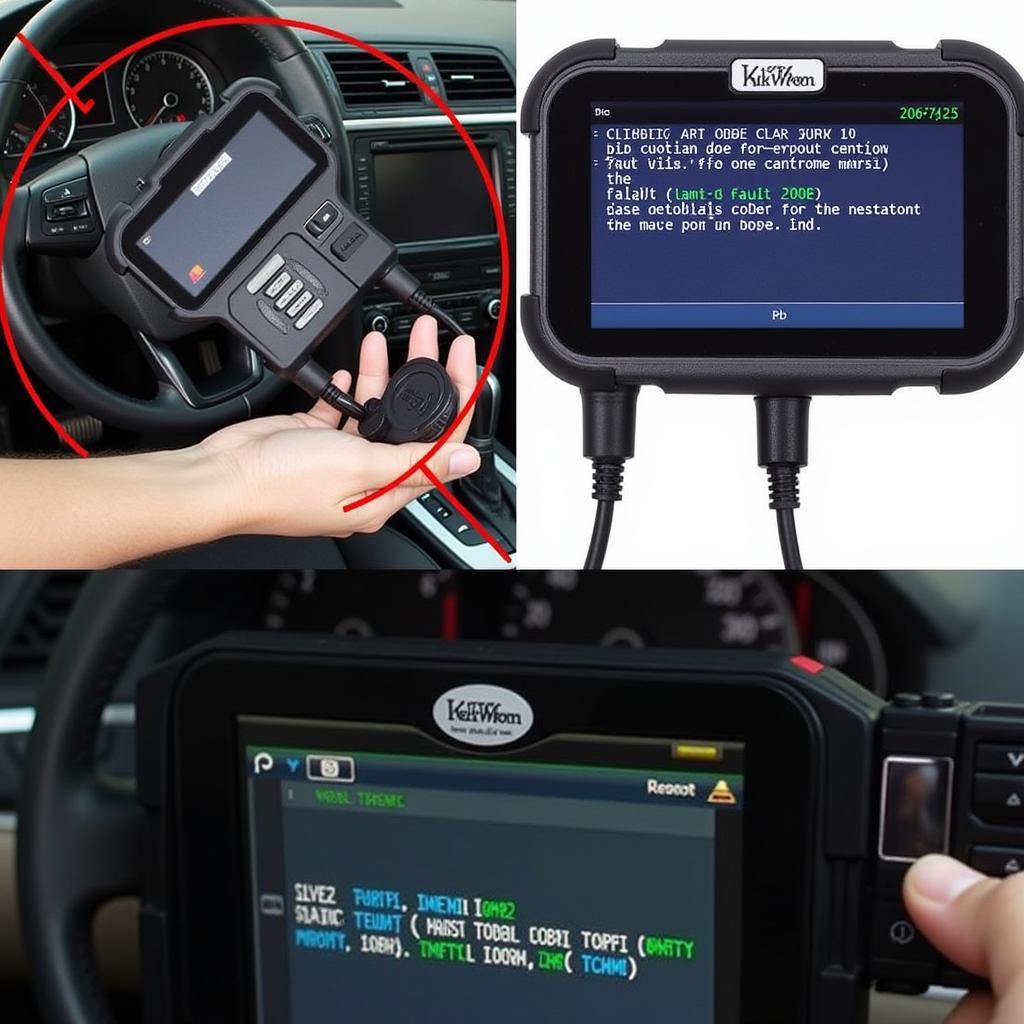Your cart is currently empty!

Decoding VW Passat Climatronic Fault Codes: A Comprehensive Guide
Troubleshooting your VW Passat’s Climatronic system can feel like navigating a maze. If your car’s climate control is acting up, chances are you’re dealing with a Climatronic fault code. Understanding these codes is the first step towards a comfortable ride again.
Understanding VW Passat Climatronic Fault Codes
The Climatronic system in your VW Passat is a complex network of sensors, actuators, and electronic control units. When a component malfunctions, the system generates a fault code, which can be accessed using a diagnostic scan tool. These codes pinpoint the specific issue, saving you time and money on unnecessary repairs.
Common VW Passat Climatronic Fault Codes
Some of the most common VW Passat Climatronic fault codes include:
- 00792: A/C Pressure Switch (F129)
- 01274: Air Flow Flap Positioning Motor (V71)
- 00604: Potentiometer for Footwell/Defroster Flap Positioning Motor (G113)
Each code corresponds to a specific component or circuit within the Climatronic system. Knowing what these codes mean can empower you to diagnose the problem yourself.
 VW Passat Climatronic Control Panel
VW Passat Climatronic Control Panel
How to Retrieve VW Passat Climatronic Fault Codes
Retrieving the fault codes requires a diagnostic scan tool compatible with Volkswagen vehicles. These tools can be purchased online or at most auto parts stores. Once you have a scan tool, follow these steps:
- Connect the scan tool to the OBD-II port located under the dashboard.
- Turn the ignition on without starting the engine.
- Select the “VW Passat” option on the scan tool.
- Choose “Climatronic” from the list of systems.
- Select “Read Fault Codes.”
The scan tool will then display any stored Climatronic fault codes. Be sure to write down the codes and their descriptions.
Interpreting VW Passat Climatronic Fault Codes: What Do They Mean?
Once you have the fault codes, the next step is to interpret them. A repair manual specific to your VW Passat model year is invaluable here. These manuals provide detailed descriptions of each fault code and suggest possible solutions. Online forums and communities dedicated to VW Passats can also be helpful resources.
 VW Passat Climatronic Diagnostic Scan Tool in Use
VW Passat Climatronic Diagnostic Scan Tool in Use
DIY Repairs vs. Professional Help
While some Climatronic issues can be addressed with DIY repairs, others require the expertise of a qualified technician. For example, replacing a faulty temperature sensor might be a straightforward task, but diagnosing and repairing a complex wiring issue is best left to the professionals. Always assess your skills and comfort level before attempting any repairs.
“Knowing the specific fault code allows you to research the issue thoroughly and decide whether it’s a DIY project or if you need professional assistance,” advises John Miller, a seasoned automotive electrical engineer.
Preventing VW Passat Climatronic Issues
Regular maintenance can help prevent Climatronic problems. This includes:
- Inspecting and cleaning the cabin air filter.
- Checking the refrigerant level.
- Having the system checked by a qualified technician during routine maintenance.
Conclusion: Taking Control of Your VW Passat’s Climatronic System
Understanding VW Passat Climatronic fault codes empowers you to take control of your car’s climate control system. By utilizing the information provided in this guide, you can effectively diagnose and address Climatronic issues, ensuring a comfortable and enjoyable driving experience. For further assistance or personalized advice, feel free to contact us at +1 (641) 206-8880 and our email address: vcdstool@gmail.com or visit our office at 6719 W 70th Ave, Arvada, CO 80003, USA. We also offer professional-grade diagnostic tools at vcdstool.
“Preventative maintenance is key to avoiding costly Climatronic repairs down the line,” reminds Sarah Chen, a leading automotive technician specializing in VW vehicles. Remember to consult your vehicle’s owner’s manual for specific maintenance recommendations.
by
Tags:
Leave a Reply